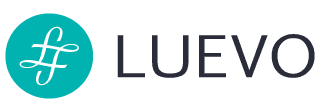Branding and Communications for Emerging Designers (Part 2)
In the first part of this series, we discussed the basics of communications and branding. Today we’ll take you through the practical steps to branding your collection.
Presence
This step is vital in having a place to communicate your existence to fashion followers. Which markets have you chosen and what are you target customers? Presenting your collection on various platforms with a logo and products is important, but what’s more crucial is your business lingo as you meet buyers. How can you convince individuals that your products will be a hit? This is when your business brain should take over.
Discussing who your target is and how your brand is relevant to today’s industry is important. How will you cope with stock turnover or fit the demands of your target store? Depending on the store, the demands and commitments will vary. For example, a department store won’t ask the same things as a small independant shop. This business discussion will be key in communicating with buyers.
Visuals in the form of a logo, pictures, advertising campaigns are key to supporting the expansion of your brand. These will aid in communicating the message of your collection as you meet with buyers. How can you use visuals to show what your brand is, what it stands for, and who it is for? It should align with the message your trying to communicate.
Buyers are not the only individuals designers will have to meet. In the industry, there are suppliers and distributors. This again shows the business side of the industry. For a moment, forget about your brand, creativity, art and your design. You’ll have to prepare the technical aspects of exactly what you want for your products and partners you are working with. Appropriate patterns will be needed for factories to produce products and there is little room for errors. This is described as a business to business (B2B) meeting and for smaller designers, don’t expect the same treatment as a big brand who will have a larger scale of production.
Focus on the quality you’ll get for your budget
Focus on your margins
Be professional, communicate as a professional
Be prepared of what you are willing to accept and what you are not
Know shipping terms, quantities, quality, margin
Get a factory you can count on, though it may not be the cheapest you can find
Find a producer with who you can build a long term relationship with
Finally, there is also another group that matters: the press.
If your advertising budget is very small, you’ll have to rely on Public Relations. To create awareness about brands, a good pitch will interest journalists through story telling. Don’t forget pictures in aiding your descriptions of the collection. It should be simple and direct. A great way to do this is communicating with bloggers in your market and important press mediums. Talk about the values and inspiration behind why and how you’ve created the brand.
Doing this is a difficult task for people who are not journalists, but it will help you in business negotiations. This simple exercise will help you express your brand and values in front of buyers and press. Always back up your presentations and PR communications with images as these will define your collection. Optimal use of social media will add to creating brand awareness which will hopefully lead to customers.
With a modest budget, the things outlined above are challenging but not impossible. This is also the case with advertising – how can designers do this with a small budget? Stay tuned for part 3/3!
This article was written by Alexandra. Follow her on Twitter @Stylindublin
Are you looking for a new writing opportunity? Perhaps you have style tips that you would like to share with the world? We value new fashion trends and are always looking for talented guest bloggers. If you’re a blogger or writer, this is the place for you to get noticed. Can you see yourself as a part of our blogging team? Apply here!
